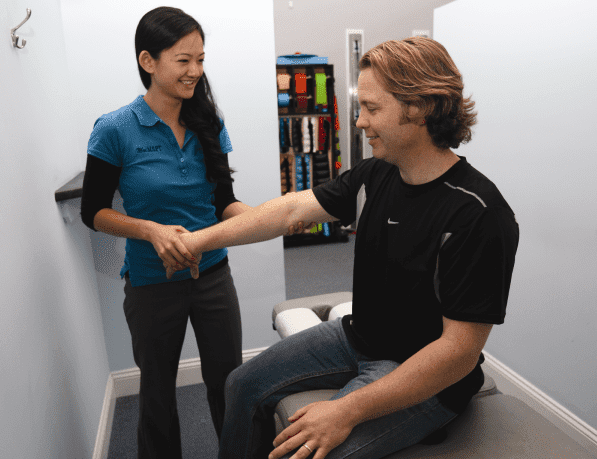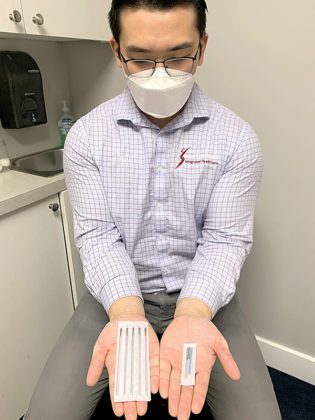By Helene Mitchell, Physical Therapy Assistant
You may know someone who has bursitis or you may have been diagnosed with bursitis yourself, but do you really know what it is and how to treat it?
Bursitis is caused by the inflammation of a bursa, a small fluid-filled sac that acts as a cushion between bones and the overlying tissue, allowing free movement. Bursas are located throughout the body but most common in the hip (greater trochanter), shoulder, ankle, elbow and thigh. When the bursa is inflamed, movement becomes restricted and often results in pain. Mild pain can be remedied with rest, but chronic or severe pain can warrant physical therapy.
I will speak specifically about hip or trochanteric bursitis which occurs in the bursa at the site of the greater trochanter, the bony point on the side of the hip. Pain usually occurs around the hip, thigh and buttocks and worsens when lying on the affected side. Hip bursitis can affect anyone, but is more common in middle-aged to elderly women. Risk factors include :
- Repetitive stress (overuse) injury such as running, climbing stairs, bicycling, prolonged standing
- Hip injury. A direct fall onto, or bumping your hip
- Spine disease includes scoliosis, arthritis of the lumbar (lower)spine
- Leg length discrepancy when one leg is shorter than the other by more than one inch. This affects the way you walk and can irritate the bursa.
- Rheumatoid arthritis increases risk of bursa becoming inflamed.
- Previous hip surgery including prosthetic implants can irritate bursa.
Diagnosis by a doctor includes a physical exam and sometimes x-rays, bone scans or MRIs to rule out other conditions. Once diagnosed, treatment includes lifestyle changes such as modification of activities, use of anti-inflammatory drugs, sometimes an injection of a corticosteroid is given to help relieve symptoms. Surgery to remove the bursa is rarely needed for hip bursitis and only performed if non-surgical treatments fail to reduce inflammation or pain.
The goal of Physical Therapy in treating hip bursitis is to reduce/eliminate pain and allow you to resume the activities that potentially caused the condition. Modalities such as moist heat, ultrasound, may be used along with stretching. Exercises to increase hip range of motion will be given along with strengthening exercises to help decrease bursitis inflammation.
As always the best cure is prevention so try to avoid repetitive activities that put stress on the hip, lose weight if necessary, get properly fitting shoe lifts for leg length discrepancies and maintain strength and flexibility of the hip muscles.
Photo Credit: Flickr/Alan Campbell
![]()





